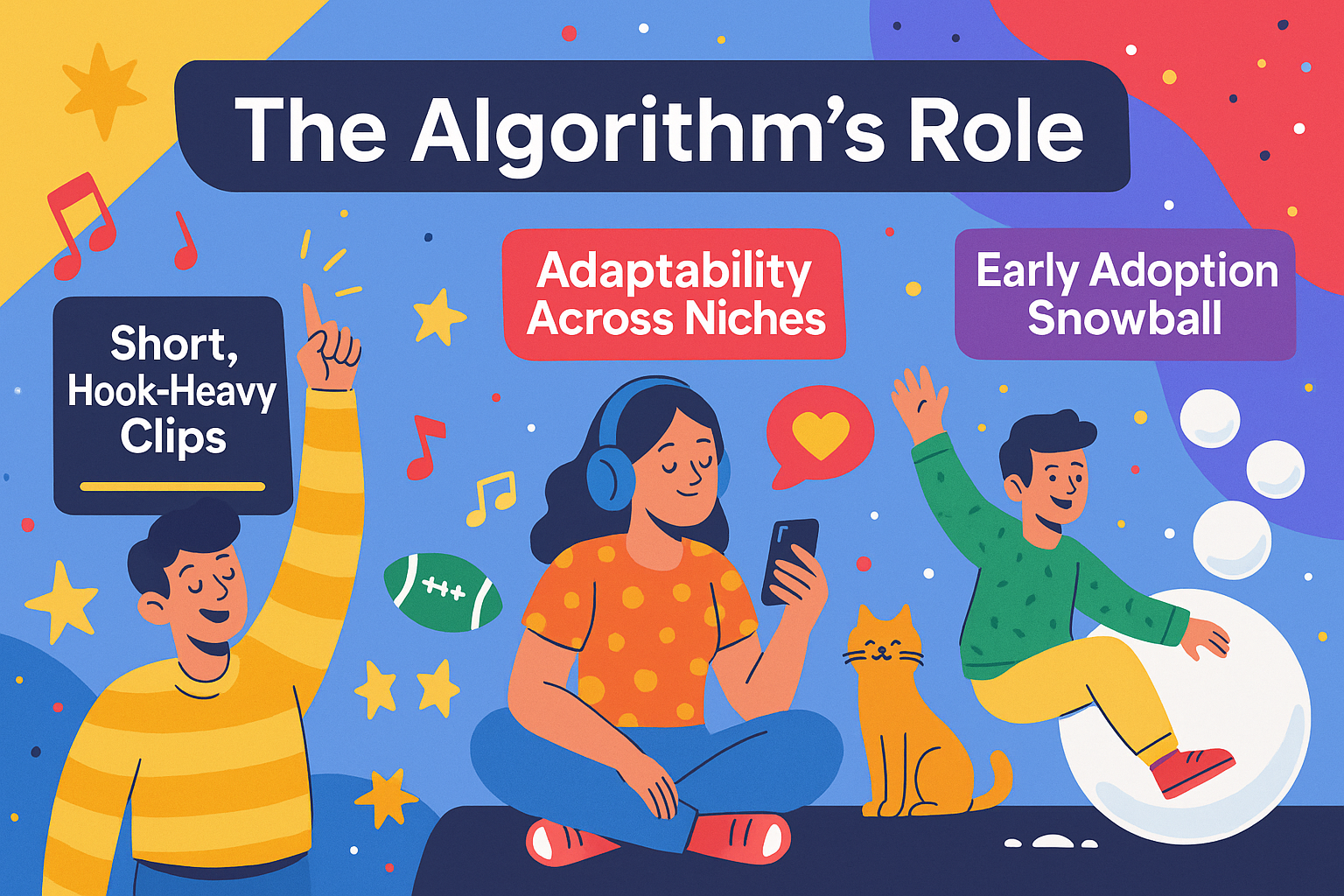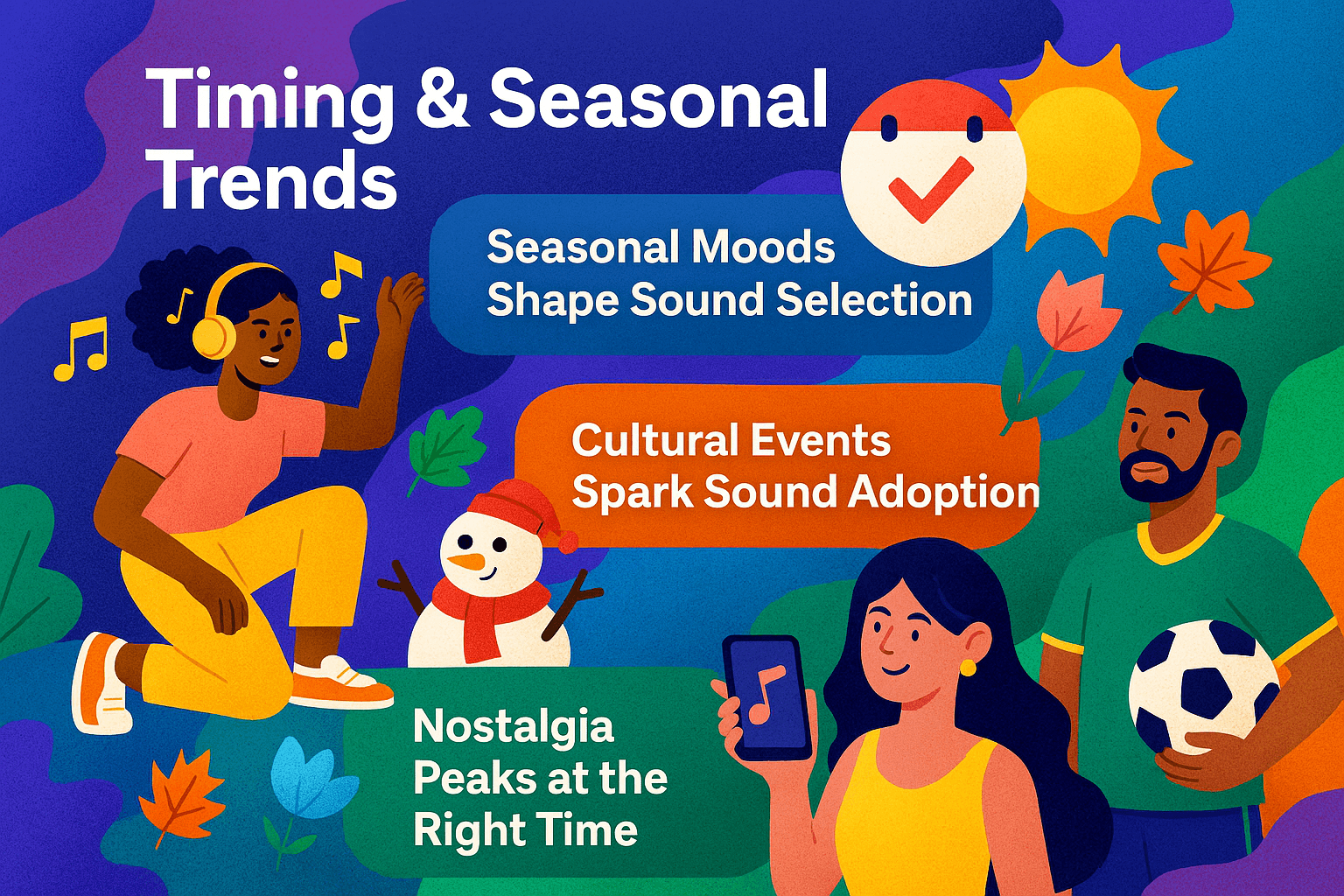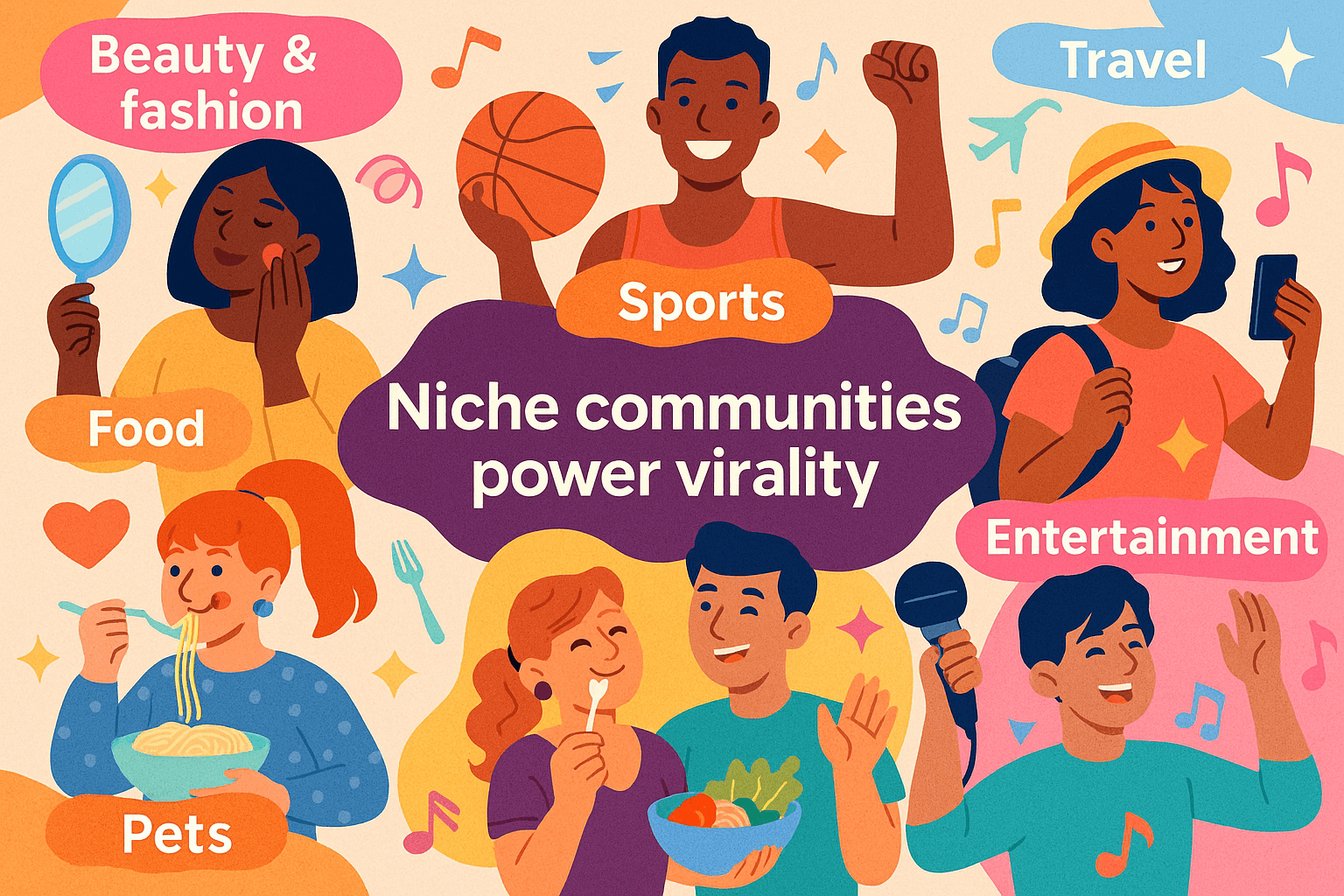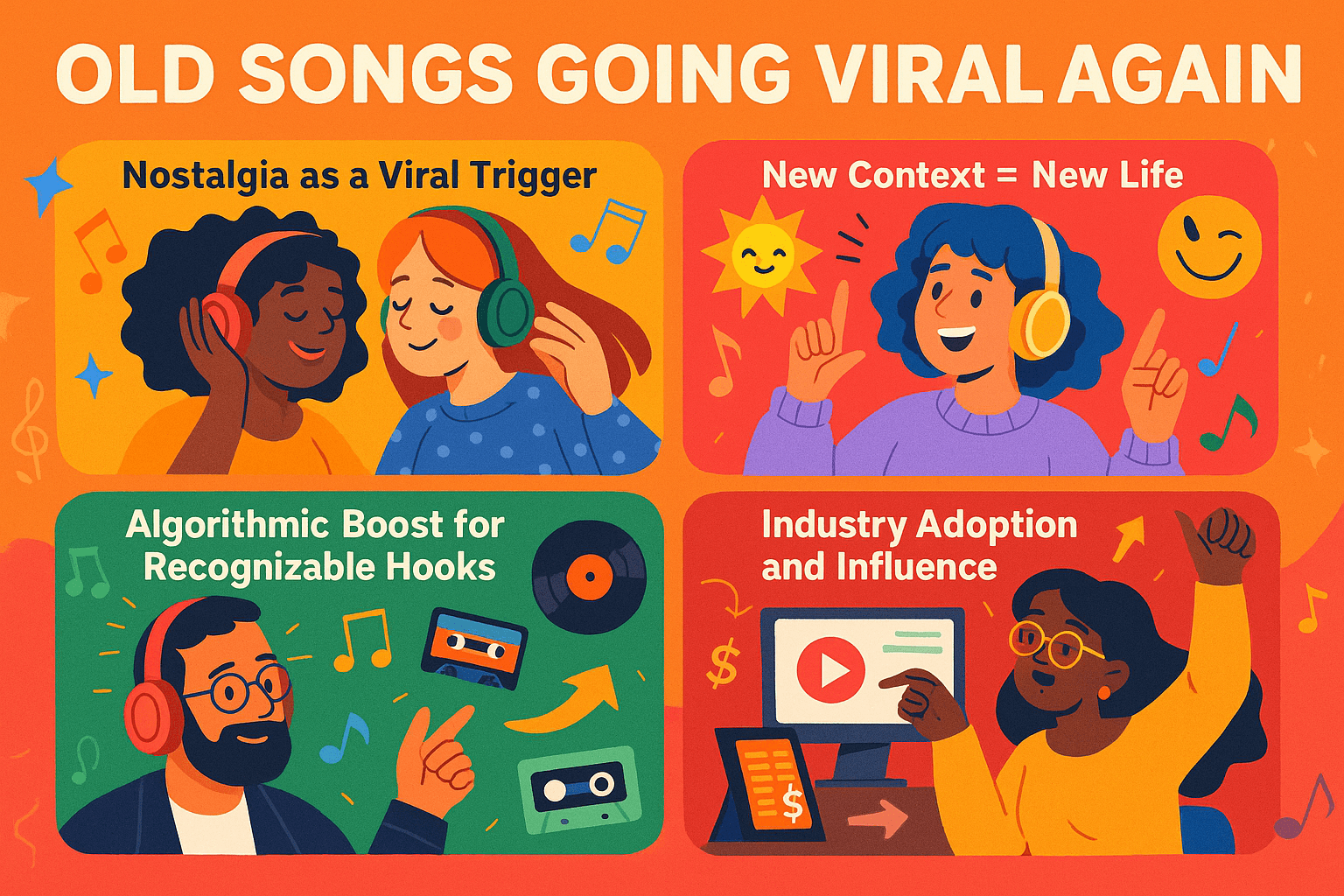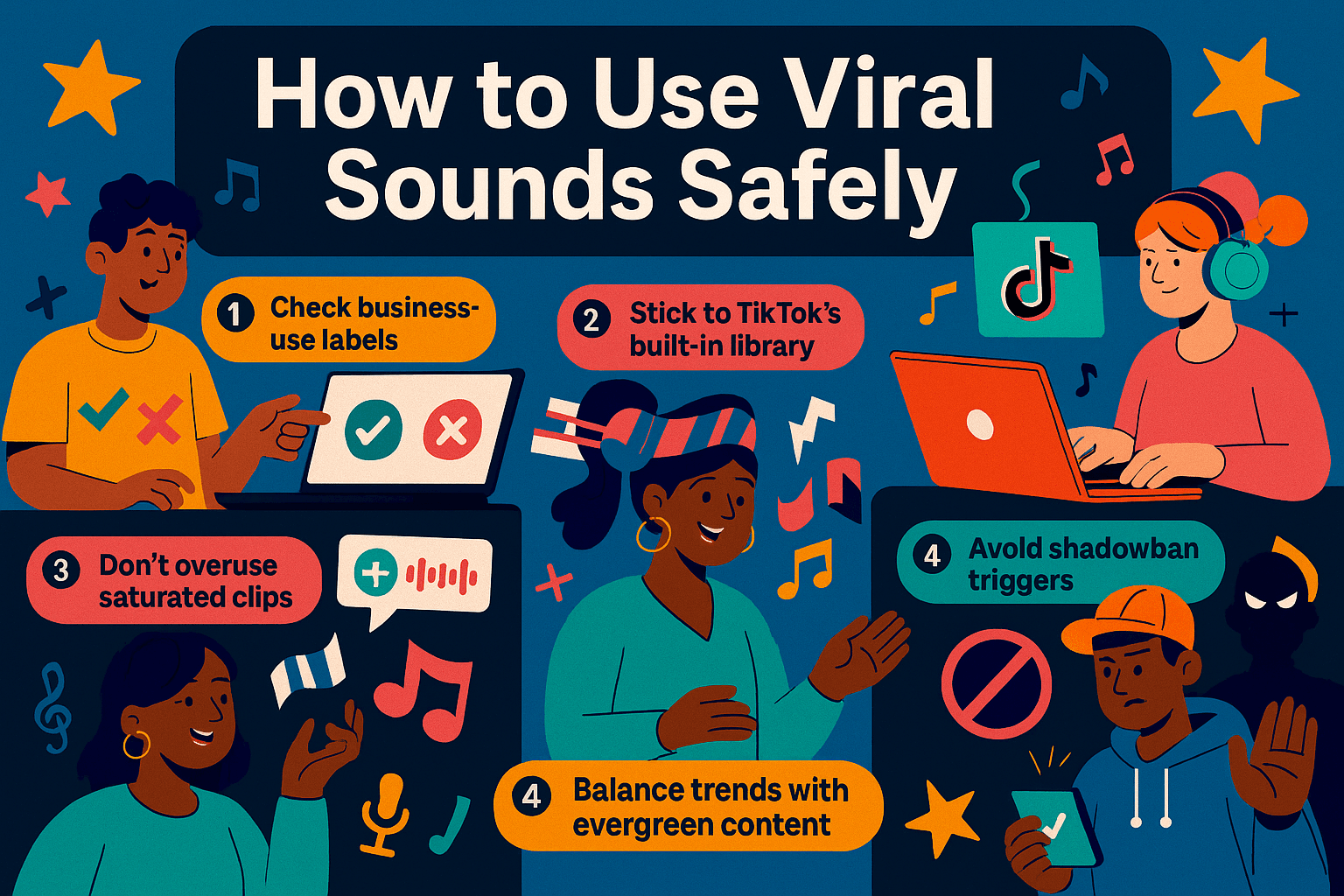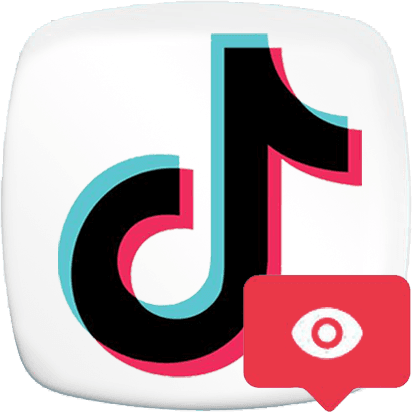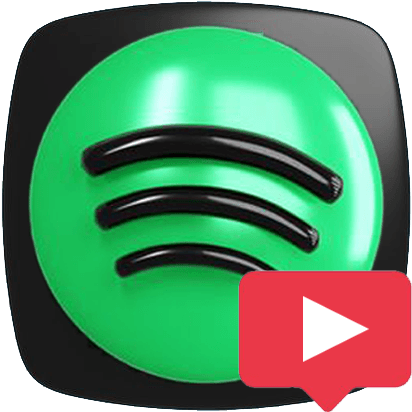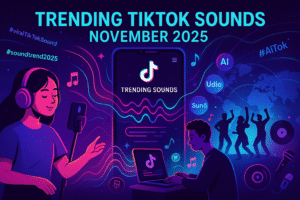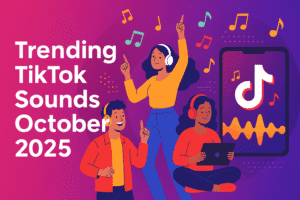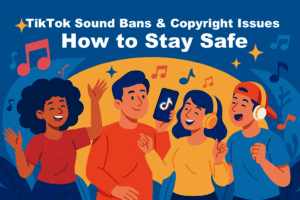The Algorithm Role
When a sound goes viral on TikTok, it’s rarely by accident. The algorithm is designed to amplify audios that increase watch time and engagement — two of the most important signals on the platform.
The TikTok algorithm doesn’t just promote content — it actively shapes which sounds rise. Short, versatile, and sticky audios get algorithmic preference, turning them into viral trends.
Short, Hook-Heavy Clips
TikTok’s system favors sounds that grab attention in the first 3–5 seconds. That’s why sped-up edits, punchy beat drops, or meme-friendly snippets rise faster than full-length tracks. A 10-second sound with an instant hook is easier for creators to use and for viewers to rewatch multiple times — boosting the loop count TikTok loves.
Adaptability Across Niches
The algorithm identifies audios that work in different contexts. A track like Tokyo Drift isn’t just for car culture — it also shows up in sports edits, lifestyle montages, and even pet videos. The more niches a sound can cross, the more the algorithm pushes it.
Early Adoption Snowball
When a sound first appears and a few creators get traction, TikTok tests it with wider audiences. If engagement spikes, the algorithm snowballs the trend into the “For You Page.” That’s why early adopters of a viral sound often see bigger reach than those who jump in late.
Learn more: How to Use Sounds for More Reach?
The Key Drivers Behind Viral TikTok Sounds
From memes and cultural moments to perfect timing, niche community influence, and even the revival of old songs, multiple factors fuel why certain sounds go viral on TikTok. Together, these drivers explain how audio trends spread, gain momentum, and dominate the platform.
Explore the latest TikTok monthly trending sounds in our monthly updated guideline.
Meme & Challenge Culture
TikTok isn’t just about music — it’s about community creativity. Meme and challenge culture is what transforms a regular track into a viral phenomenon. Once an audio becomes linked with a joke, dance, or skit format, it spreads far beyond its original fanbase.
Meme and challenge culture doesn’t just boost a song — it makes it unforgettable. Once a sound becomes a joke, a challenge, or a remix template, it evolves into a cultural artifact that TikTok keeps alive far longer than mainstream charts would.
Memes Create Instant Recognition
- A sound tied to a meme instantly builds cultural shorthand. When users hear “delulu” or “I’m Not Them”, they already know the joke before watching the video.
- Meme sounds thrive because they’re recyclable — creators can reuse the same clip across countless contexts without it feeling repetitive.
- The key is relatability: the audio becomes a mirror of shared experiences, making users more likely to remix it themselves.
Challenges Drive Participation
- Challenges provide a framework for action — everyone knows the rules, which lowers the barrier to entry.
- Dance routines (like those fueled by Fun – Soma Remix), transitions, and “before vs. after” glow-ups are the backbone of TikTok’s participatory culture.
- The more people join, the stronger the network effect: every challenge video adds momentum, signaling the algorithm to push the sound further.
- Brands also jump in — pairing products with trending challenges to capture viral momentum.
Remix Culture Speeds Things Up
- Sped-up, slowed, and mashup versions often outperform the original. Why? They’re better optimized for TikTok’s 10–20 second format.
- Remix culture thrives because creators adapt tracks for different vibes:
- Sped-up = energetic edits, glow-ups, fitness clips.
- Slowed + reverb = moody, aesthetic edits.
- Mashups = surprising, comedic effect that boosts shareability.
- These remixes multiply a song’s lifespan. Even if the original drops off, its variations keep circulating in new niches.
Timing & Seasonal Trends
On TikTok, the timing of when a sound catches fire is often as important as the sound itself. Seasonal moods, cultural events, and calendar shifts play a huge role in what resonates.
TikTok sounds don’t just go viral randomly — they fit the seasonal pulse of the platform. Whether it’s back-to-school vibes, holiday nostalgia, or hype summer edits, timing is everything in how audio trends spread.
Seasonal Moods Shape Sound Selection
- Summer: upbeat, high-energy tracks dominate (Take Me Thru Dere – Metro Boomin). Perfect for travel vlogs, sports edits, and festival content.
- Fall: softer, emotional songs rise (Do I Ever Cross Your Mind – Dolly Parton, Tears – Sabrina Carpenter), syncing with back-to-school and cozy seasonal vibes.
- Winter: nostalgic holiday edits, romantic ballads, and slower lo-fi BGMs.
- Spring: cheerful, hopeful tracks gain traction, often paired with “new beginnings” edits.
Cultural Events Spark Sound Adoption
- Big cultural or global events (World Cup, Olympics, movie releases) push specific tracks into virality. For example, BTS’s Dreamers surged in Indonesia thanks to the FIFA World Cup tie-in.
- Even small events like school sports days in Japan spark temporary spikes in athletic-themed BGMs.
Nostalgia Peaks at the Right Time
- Older songs trend when they match collective emotion — e.g., Upside Down – Jack Johnson climbing as users posted nostalgic summer-to-fall transitions.
- TikTok thrives on shared memory triggers, turning decades-old tracks into seasonal rituals.
Niche Communities Power Virality
One of TikTok’s biggest strengths is its micro-communities — niche spaces like #BeautyTok, #PetTok, or #TravelTok. These groups don’t just follow trends; they shape which sounds go viral by adapting audio to their unique content styles.
Niche communities aren’t passive — they’re active amplifiers. By repurposing sounds for their own content styles, these groups transform an audio clip into a viral, multi-niche trend.
Beauty & Fashion
- Beauty creators lean on aesthetic, chill tracks (Matcha Boba – Becomfy, Carefree Days – Peaceful Reveries) for skincare, GRWM, and transformation edits.
- Fashion influencers often sync transitions to hype beats (Fastlane – Chubz, Fun – Soma Remix), making quick outfit swaps more dynamic.
Sports
- Hype audios like Take Me Thru Dere – Metro Boomin or Tokyo Drift – Xavier Wulf dominate basketball and car culture edits.
- Even alternative sounds (Afrobeat in Nigeria, Brazilian funk in Turkey) become tied to sports challenges and trick-shot compilations.
Food
- Cozy tracks (vlog, chill out BGM – SUNNY HOOD STUDIO) pair well with recipe videos and café aesthetics.
- Meme audios (like delulu – NESYA) drive playful food trends: “Expectation vs. Reality,” taste-testing, or snack reviews.
Pets
- Funny, chaotic sounds (Do It – Mykko Montana, Aww Yea – El Hitta) are matched with silly pet antics.
- Emotional tracks (Upside Down – Jack Johnson) fuel heartwarming edits of rescues, reunions, or pets growing up.
Travel
- Cinematic beats (Meridian – ODESZA, piano BGMs in Asia) amplify scenic montages and “day in my life abroad” vlogs.
- Nostalgic tracks (Rocky Mountain Way – Joe Walsh) add depth to road trip edits and retro-style reels.
Entertainment (Comedy, Dance, Lifestyle)
- Brazilian funk (Estouração Automotiva) drives comedy skits with jump cuts and exaggeration.
- Dance communities rely on remixes (Sailor Song – Gigi Perez) and sped-up edits for choreography.
- Lifestyle creators turn emotional audios (So Far So Fake – Pierce The Veil, Joji – SLOW DANCING IN THE DARK) into POV storytelling.
Old Songs Going Viral Again
TikTok proves that music doesn’t expire. With the right emotional timing, meme context, or remix treatment, a 40-year-old track can suddenly trend like it was released yesterday. Creators who spot and adopt these resurging sounds early can ride a viral wave that’s both nostalgic and fresh.
TikTok has transformed music discovery. Unlike traditional platforms where charts are driven by new releases, TikTok can revive songs from decades past and catapult them to the top of playlists and even Spotify charts. Here’s how and why this happens:
Nostalgia as a Viral Trigger
- Shared emotional memory: Nostalgia connects people across generations. When a user hears Upside Down – Jack Johnson paired with cozy fall transitions, it taps into a universal “childhood memory” feeling.
- Generational crossover: Older Millennials and Gen X recognize these songs from their youth, while Gen Z discovers them as “new.” This creates a wider audience pool.
- Seasonal timing: Throwback tracks often align with cultural mood shifts (e.g., Rocky Mountain Way resurging as outdoor/adventure edits peak at the end of summer).
New Context = New Life
- Meme adoption: Old songs find new meaning when paired with trending memes. Breakin’ Dishes – Rihanna wasn’t originally a viral hit, but TikTok reframed it in comedy skits and “retro diva” edits.
- POV storytelling: Songs like SLOW DANCING IN THE DARK – Joji resurface again and again because their dramatic tone fits TikTok’s POV video format.
- Sped-up or slowed versions: Remixed variants of old tracks give them renewed energy, making them feel “new” even if the audience already knows the original.
Algorithmic Boost for Recognizable Hooks
- Instant recognition = more loops. TikTok favors sounds that people replay. A familiar hook, chorus, or lyric automatically increases the chance of a viewer rewatching the clip.
- Cross-platform reinforcement: When old tracks blow up on TikTok, they spill over into Spotify, Apple Music, and YouTube — generating headlines that reinforce the trend. (Kate Bush’s Running Up That Hill revival in 2022 is a classic example of this effect.)
- Cultural remixing: Classic tracks like Careless Whisper – George Michael or Rihanna’s Diamonds often trend not as full performances but as short samples repurposed into memes, making them algorithm-friendly.
Industry Adoption and Influence
- Record labels monitor TikTok for resurgent hits, then push them on streaming platforms and radio once they spike.
- Brands sometimes license revived tracks for ads, amplifying the loop between nostalgia and virality.
- This creates a feedback cycle: TikTok revives → audiences engage → music industry pushes → trend lasts longer.
How to Use Viral Sounds Safely
Viral TikTok sounds can transform a post from unnoticed to trending overnight. But if you use them incorrectly, you risk copyright strikes, muted audios, or even shadowbans. Here’s how to ride the trend safely while protecting your account.
Viral TikTok sounds are like jet fuel — they can boost you quickly, but without safe usage and evergreen balance, you risk burning out or getting flagged. The safest growth path combines business-approved tracks, creative use of trending sounds, and evergreen formats.
Check Business-Use Labels
- TikTok has a clear system: some tracks are only licensed for personal use, while others are marked “Approved for Business Use.”
- If you’re running a brand account, promoting products, or creating ads, you must use business-approved tracks.
- Safe examples: Bloom – ODESZA (US), vlog BGM – SUNNY HOOD STUDIO (Japan/Thailand).
Risk if ignored: your branded videos could be muted later, hurting ad spend and campaign ROI.
Stick to TikTok’s Built-In Library
- Always use the audio directly from TikTok’s sound library rather than uploading it from outside sources.
- TikTok’s library tracks usage and ties you into the “trend hub,” which means your video can surface alongside others using the same sound.
- Uploading an external file, even if it’s the same audio, removes you from that trend funnel and increases the chance of copyright claims.
- Bonus tip: always check the “original sound” page before posting — if millions of views are already attached, you know the audio is trend-safe.
Don’t Overuse Saturated Clips
- When a sound peaks, thousands of creators use the same 10-second snippet. TikTok’s algorithm starts filtering these to avoid user fatigue.
- To stand out, edit your audio differently:
- Trim to a different section of the track.
- Add sound effects or combine it with a voiceover.
- Layer with transition effects so the clip feels fresh.
- By innovating with the same sound, you ride the trend but avoid the “seen this a hundred times” drop-off.
Avoid Shadowban Triggers
- TikTok can quietly suppress content (shadowban) if a video pairs a trending sound with restricted hashtags or sensitive topics.
- Example: pairing a trending dance track with banned hashtags like #FYP or politically sensitive terms.
- To stay safe:
- Double-check hashtags with TikTok’s restricted list.
- Avoid embedding trending audio into controversial content.
- Keep music aligned with safe categories (entertainment, lifestyle, education).
For a full strategy, see our Shadowban Guide.
Balance Trends with Evergreen Content
- Trending sounds spike fast but fade quickly. If all your growth depends on them, your reach collapses when the trend dies.
- Evergreen formats — tutorials, storytelling, reviews, “how-to” guides — keep performing long after trends shift.
- Best strategy:
- Use viral sounds for visibility spikes.
- Use evergreen content for steady authority and trust.
- Accounts that balance both stay relevant month after month, instead of riding a “viral one-hit wonder” cycle.
Viral TikTok sounds can give you a quick visibility boost — but lasting growth comes from combining them with a long-term strategy. That’s where SMMNut helps.
Want to grow beyond trends?
Check out our TikTok Followers Service — designed to help creators and brands build steady authority, not just temporary viral spikes.

